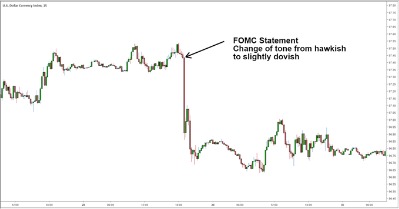No products in the cart.
Mục Lục
Content

Brokerage services for US-listed, registered securities are offered to self-directed customers by Open to the Public Investing, Inc. (“Open to the Public Investing”), a registered broker-dealer and member of FINRA & SIPC. Additional information about your broker can be found by clicking here. Open to Public Investing is a wholly-owned subsidiary of Public Holdings, Inc. (“Public Holdings”). This is not an offer, solicitation of an offer, or advice to buy or sell securities or open a brokerage account in any jurisdiction where Open to the Public Investing is not registered. Securities products offered by Open to the Public Investing are not FDIC insured. Apex Clearing Corporation, our clearing firm, has additional insurance coverage in excess of the regular SIPC limits.
U.S. Treasuries (“T-Bill”) investing services on the Public Platform are offered by Jiko Securities, Inc. (“JSI”), a registered broker-dealer and member of FINRA & SIPC. See JSI’s FINRA BrokerCheck and Form CRS for further information. When you enable T-Bill investing on the Public platform, you open a separate brokerage account with JSI (the “Treasury Account”).
JPMorgan, Wells Fargo expect deposits to extend Q2 declines
Bull markets typically occur with a growing economy, as rising corporate profits translate into rising stock prices. Higher profits and the expectation of still-higher profits can fuel investors’ expectations, causing them to bid up asset prices as long as the future looks bright. Markets tend to go through periods of boom and bust known as bull markets and bear markets, respectively. The length of a bull market can vary widely, with some lasting just a few months, while others may last years.
So not being invested in the market means missing out over the long haul. Like a savvy matador, individual investors should keep an eye on the bull’s moves, and adjust accordingly — but always stay focused on their overall strategy and goals. A bull market tends to occur when the economy is strengthening from increased business investments and higher consumer spending. As people https://g-markets.net/helpful-articles/candlestick-charting-for-dummies-cheat-sheet/ spend more on goods and services, businesses are able to pull in more revenue, create jobs, and invest in new technologies. A bull market (aka a bull run) is a long, extended period in the market when overall stock prices are on the rise. Usually, a bull market marks a 20% rise in stock prices, which follows a previous 20% decline and is followed by another 20% decline.
A bull market is a financial market characterized by rising prices and investor optimism. It is most commonly used to refer to the stock market, but can also refer to the bond, real estate, currency, and commodity markets. Bull markets tend to last for extended periods of time and are marked by increased demand for securities, rising corporate profits and GDP, and declining unemployment. The opposite of a bull market is a bear market, which is characterized by falling prices and investor pessimism. The terms “bull” and “bear” are believed to come from the way these animals attack their opponents. Positive trends are driven by high investor confidence in the security to deliver returns.
Market top and market bottom
A bull attacks by lifting its horns upward, but a bear strikes with its claws in a downward motion. Using these actions as metaphors for market movement, we talk about a bull market if the trend is up, and a bear market if the trend is down. The phrases were first published in the 18th-century book, “Every Man His Own Broker,” by Thomas Mortimer.
Most of them are open to trade Monday through Friday during regular business hours in local time. Here are some considerations for those investing in a bull market. Roboadvisors are a popular way to make steady contributions to your stock investments in index funds. Q.ai is an app that uses AI technology to help you select investment kits that align with your personal interest and values. Once you make your selections, you can keep an eye on your portfolio growth in the app. Then, when the market goes back up or another bull market comes around, your portfolio will experience growth and the earnings will increase.

Some bull markets are shorter and range from three to five years, but the average length is 5.9 years. While bull markets don’t always necessarily mean that there won’t be slight dips in the market, it does indicate steady financial growth as the value of stocks and bonds tend to trend upward overall. A bull market is a period of rising prices, particularly one where the rise is sustained over time, often with a stock or other asset repeatedly setting new highs.
Characteristics of a bull market
71% of retail investor accounts lose money when spread betting and/or trading CFDs with this provider. You should consider whether you understand how spread bets and CFDs work and whether you can afford to take the high risk of losing your money. The 1990s saw the largest total gain of any bull market in S&P 500 history, with the index gaining 417.0% in just over 113 months. With the end of the Cold War in 1991 and the onset of the digital era, the US entered its longest period of uninterrupted growth in market history.
- It profits when people pour their savings into stocks.I’ve pointed out that the annual Wall Street forecasts are wildly inaccurate, usually, by being overly optimistic.
- A bull market gains an average of 180.04% to a bear market’s loss of 36.34%.
- Some techniques are commonly paired with trading before and after regular stock market hours or during NYSE holidays, so it’s a good idea to pay attention to the pros and cons of doing that.
- To believe that this is a true bull market, you need to assume that it will keep rising.
These are just a few examples of some of the biggest bull markets in history. There have been many others, each with its own unique set of circumstances and drivers. A market where prices have been rising over time – and haven’t fallen by more than 20% from their most recent peak. It profits when people pour their savings into stocks.I’ve pointed out that the annual Wall Street forecasts are wildly inaccurate, usually, by being overly optimistic.
A financial professional can help you build a diversified portfolio to help you feel confident in bull and bear markets alike. A time when most investors are selling stocks is known as distribution, while a time when most investors are buying stocks is known as accumulation. The ‘bull’ and ‘bear’ terminology to describe markets derives from the different ways the two animals attack their opponents.
Bitcoin near 13-month high as investors welcome Ripple ruling
A steepening yield curve generally indicates a prosperous economy and a buoyant stock market. The global financial crisis of 2008 was, at the time, the most severe market crash since the Great Depression. According to market research firm InvesTech Research, the average length of bull markets since 1932 has been 3.8 years. The S&P 500’s longest bull market lasted 11 years, from 2009 to 2020, while its shortest, beginning in October 1966, lasted just over two.
- A bull market based on emotional enthusiasm and not backed by rising earnings can easily become a bubble.
- Some bull markets are shorter and range from three to five years, but the average length is 5.9 years.
- Keep in mind that other fees such as regulatory fees, Premium subscription fees, commissions on trades during extended trading hours, wire transfer fees, and paper statement fees may apply to your brokerage account.
- Bull markets can last for years and they can be local – one market might be ‘bullish’ while others around the world are struggling.
- Dividend stocks are offered through publicly-traded companies that share profits with shareholders through dividends.
- Our award-winning editors and reporters create honest and accurate content to help you make the right financial decisions.
Bull markets generally take place when the economy is strengthening or when it is already strong. They tend to happen in line with strong gross domestic product (GDP) and a drop in unemployment and will often coincide with a rise in corporate profits. Investor confidence will also tend to climb throughout a bull market period. The overall demand for stocks will be positive, along with the overall tone of the market. In addition, there will be a general increase in the amount of IPO activity during bull markets. Because prices of securities rise and fall essentially continuously during trading, the term “bull market” is typically reserved for extended periods in which a large portion of security prices are rising.
For starters, they generally happen during periods when the economy is strong or strengthening. Bull markets are often accompanied by gross domestic product (GDP) growth and falling unemployment, and companies’ profits will be on the rise. A retracement is a brief period in which the general trend in a security’s price is reversed. Even during a bull market, it’s unlikely that stock prices will only ascend. Rather, there are likely to be shorter periods of time in which small dips occur as well, even as the general trend continues upward.

When a Bull Market is occurring, investors are a lot more confident and eager to invest more money. This impacts the economy by boosting the value of the companies and increasing the value of individual portfolios of common investors. The optimism of the post-WWII years was fueled by economic strength built in part on a strong export market, which bolstered companies at home. During this period of economic expansion, a strengthened manufacturing sector started a period of innovation, producing new cars and inventions meant to increase household efficiency—in the middle of a baby boom.
Post-war boom
Charts and graphs provided within are for informational purposes solely and should not be relied upon when making any investment decision. Any projections, estimates, forecasts, targets, prospects, and/or opinions expressed in these materials are subject to change without notice and may differ or be contrary to opinions expressed by others. Please see Titan’s Legal Page for additional important information. But don’t celebrate quite yet as some stock experts are still mixed on what the rest of the year could look like and are still maintaining pessimistic views. While some experts are optimistic about the market’s ability to recover the previous year’s losses, others fear an impending recession as banks fail, the labor market continues to struggle, and real estate interest rates rise. One smart thing to do is learn the principle of dollar-cost averaging.
